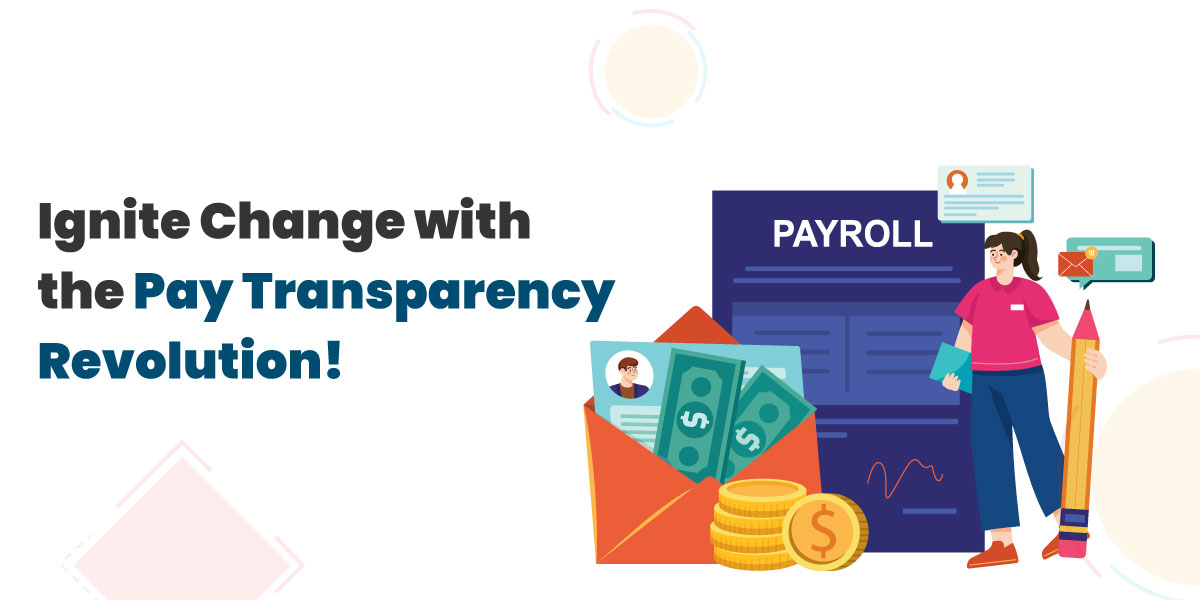The Pay Transparency Revolution: Bridge Gaps and Inspire!
Unveiling the Power of Pay Transparency
In today’s rapidly evolving work environment, the concept of pay transparency has emerged as a powerful force, challenging traditional workplace norms. As organizations strive to foster an inclusive and equitable culture, pay transparency has become a catalyst for change, bridging gaps and inspiring employees.
Pay transparency is gaining momentum across industries. According to a survey conducted by the Society for Human Resource Management (SHRM) in 2021, 70% of organizations reported being more transparent about pay compared to three years ago.
Let us explore the profound impact of pay transparency and how it revolutionizes workplace dynamics.
Enhancing Trust and Fairness
One of the primary advantages of embracing pay transparency is the enhancement of trust and fairness within an organization. By openly sharing information about compensation structures, salary ranges, and pay scales, employers can foster an environment of transparency and eliminate the perception of favoritism or inequality. This newfound openness builds trust between employees and management, promoting a sense of fairness and equality in the workplace.
Driving Employee Engagement and Motivation
Pay transparency also has a direct correlation with employee engagement and motivation. When employees have access to information about the compensation structure, they gain a better understanding of how their contributions are valued. This knowledge empowers them to align their goals and performance with the organization’s objectives. Furthermore, when employees perceive transparency in pay, it fosters a sense of ownership, belonging, and commitment, resulting in increased motivation and productivity.
Attracting and Retaining Top Talent
In today’s competitive job market, attracting and retaining top talent is crucial for organizational success. Pay transparency plays a pivotal role in this regard. Candidates are increasingly seeking transparency during the hiring process, wanting to know how their skills and experience align with the compensation offered.
By showcasing pay transparency, companies can attract high-quality candidates who value openness and fairness. Moreover, existing employees are more likely to stay with an organization that embraces transparency, reducing turnover rates and ensuring a stable workforce.
Encouraging Salary Equity and Closing Gender Gaps
One of the significant benefits of pay transparency is its potential to address salary inequities and close gender gaps. When compensation information is accessible, it becomes easier to identify disparities and rectify them promptly. By actively monitoring and addressing pay gaps, organizations can ensure equitable pay practices and promote gender equality. Pay transparency creates an environment where meritocracy and fairness thrive, empowering women and other marginalized groups.
Embracing the Pay Transparency Revolution
To fully embrace the power of pay transparency, organizations must adopt a holistic approach. Here are some key steps to implement pay transparency effectively:
- Assess and Revise Compensation Structures
Review existing compensation structures to ensure they align with market standards and promote fairness. Identify any discrepancies and make necessary adjustments to address inequities. Communicate these changes openly to foster transparency.
- Provide Clear Compensation Guidelines
Develop comprehensive guidelines that outline the factors considered in determining employee compensation. Communicate these guidelines to employees, ensuring they have a clear understanding of how their performance and experience contribute to their pay.
- Establish Open Communication Channels
Create platforms for open and honest conversations about pay. Encourage employees to discuss compensation-related matters, address concerns, and seek clarification. This open dialogue builds trust and strengthens the commitment to pay transparency.
- Educate and Train Managers
Train managers with the skills and knowledge to navigate pay transparency effectively. Train them to have constructive conversations about compensation, reinforcing the organization’s commitment to fairness and openness.
- Regularly Monitor and Evaluate
Continuously monitor and evaluate pay practices to ensure ongoing transparency and equity. Regularly review salary data, conduct internal audits, and benchmark against industry standards to identify and rectify any potential disparities.
Conclusion – Embrace the Future of Work
The pay transparency revolution is reshaping the way organizations operate, bringing fairness, equality, and motivation to the forefront. By embracing this revolution, companies can bridge gaps, inspire their workforce, and create an environment where everyone thrives. As we move forward, let us champion pay transparency and propel our organizations into a future that values openness, trust, and collaboration.
To navigate this transformative journey towards pay transparency, Infojini offers comprehensive solutions tailored to meet the unique needs of organizations. With their expertise in HR technology and data analytics, Infojini can assist companies in implementing transparent compensation structures, developing clear guidelines, and establishing open communication channels. Their services empower organizations to monitor and evaluate pay practices, ensuring ongoing transparency and equity.
By partnering with Infojini, companies can confidently embrace the future of work and create a thriving workplace built on transparency, fairness, and employee engagement. Together, we can pave the way for a new era of work where pay transparency fuels success.
Remember, a transparent workplace is a thriving workplace!
Related Posts
Subscribe For Updates
Categories
- Accountant
- AI
- Automation
- Awards and Recognitions
- Blue Collar Staffing
- Burnouts
- Campus Recruiting
- Cloud
- Co-Ops agreements
- Company Culture
- Compliance
- contingent workforce
- Contingent Workforce
- COVID-19
- Cyber Security Staffing
- Data Strategy
- Digital Transformation
- direct sourcing
- Distributed Workforce
- Diversity
- Diversity & Inclusion
- Economy
- Events & Conferences
- fleet industry
- Gig Economy
- Girls in Tech
- Global Talent Research and Staffing
- Government
- Healthcare
- Healthcare Staffing
- Hiring Process
- Hiring Trends
- Home Helathcare
- HR
- HR Practices
- HR Tech
- IT
- Labor Shortages
- Life Science
- Local Governments
- News
- Nursing
- Payroll Staffing
- Public Sectors
- Recruiting
- Remote Work
- Skill Gap
- SMB Hiring
- Snowflake
- Staffing
- Staffing Augmentation
- Staffing Challenges
- Talent ROI
- Tech Staffing
- Technology
- Tips & tricks
- Total Talent Management
- UI/UX Design
- Uncategorized
- Veteran Staffing
- Veterans Hiring
- Veterans Hiring
- Workforce Management
Recent Posts
- Automation in Recruiting: From Chatbots to Predictive Screening
- Gig Economy Expansion: The Impact on Talent Pools and Business Models
- Skills-Based Hiring: Why Credentials Alone Don’t Cut It in 2025
- Procurement 3.0: AI & Intelligent Automation in 2025
- Q3 Is Here: Is Your Contingent Workforce Strategy Falling Behind?
Newsletter
Archive
- September 2025
- August 2025
- June 2025
- April 2025
- March 2025
- December 2024
- November 2024
- October 2024
- September 2024
- August 2024
- July 2024
- June 2024
- May 2024
- April 2024
- March 2024
- February 2024
- January 2024
- December 2023
- November 2023
- October 2023
- September 2023
- August 2023
- July 2023
- June 2023
- May 2023
- April 2023
- March 2023
- February 2023
- December 2022
- November 2022
- October 2022
- September 2022
- August 2022
- July 2022
- June 2022
- November 2021
- October 2021
- September 2021
- August 2021
- July 2021
- June 2021
- May 2021
- April 2021
- March 2021
- February 2021
- January 2021
- December 2020
- November 2020
- October 2020
- September 2020
- August 2020
- July 2020
- June 2020
- May 2020
- April 2020
- March 2020
- February 2020
- January 2020
- December 2019
- November 2019
- October 2019
- September 2019
- August 2019
- July 2019
- June 2019
- May 2019
- January 2019
- December 2018
- November 2018
- October 2018
- September 2018
- August 2018
- July 2018
- June 2018
- May 2018
- April 2018
- March 2018
- February 2018
- January 2018
- December 2017
- November 2017
- October 2017
- September 2017
- August 2017
- July 2017
- June 2017
- May 2017
- November 2016
- October 2016




